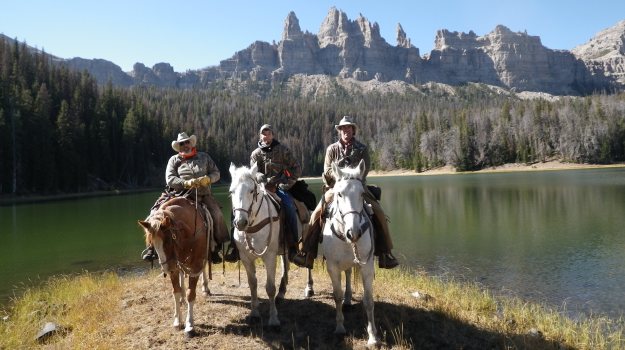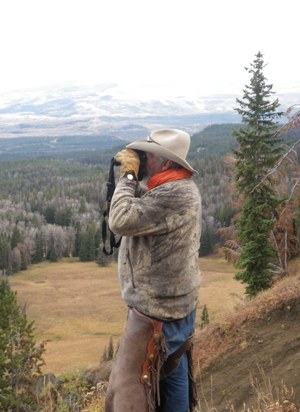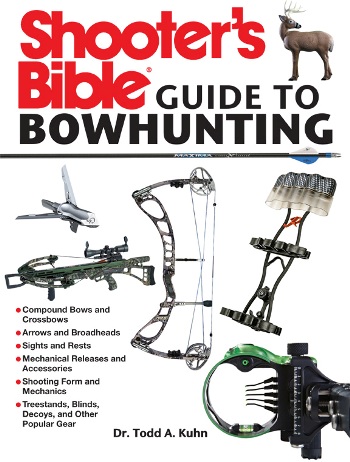
When an Elk Hunt Is More Than an Elk Hunt
Editor’s Note: Karl Badger of Salt Lake City, Utah, is Mossy Oak’s Big Game Regional Pro Staff Manager for the western states. He primarily hunts and guides for elks, mule deer, antelope and bighorn sheep. He hunts with both a Browning 7mm and a PSE Vendetta. His favorite Mossy Oak camo pattern for western hunting is Mossy Oak Brush, but that may change depending on the season. Badger says, “In the fall, our area has a lot of native grasses and sage, and most of the leaves have fallen off the trees. So, from the waist up, you may be in brown grass that looks just like Mossy Oak Brush. If you’re hunting in the mountains, this pattern also blends in with the rocks and terrain there.”
Most Western hunts are spot-and-stalk hunts. We rarely hunt from tree stands. This is why Mossy Oak Brush blends in with most of the terrain where we hunt. In most of the Rocky Mountain States, our bow elk season starts around August 15 or around September 1. Depending on the area you plan to hunt, this season can run all the way to the middle of December. Rifle season for elk in most of the Rocky Mountain states will start around October 1 or mid-October. Colorado has a huge population of elk and staggers its rifle seasons. So, if you’re planning an elk hunt for next year, be sure to check the state’s regulations. Find out whether you have to go through a drawing to get a tag, or if you can buy a tag over the counter. Also, be sure to check the hunting regulations for the specific region you plan to hunt. If you’re planning to hunt out of state, or you draw a tag for a really-difficult area, you may want to hunt with a centerfire rifle to make sure you have a successful hunt.
My favorite place to hunt is the northeastern portion of Wyoming, a wilderness area near Yellowstone National Park. The only way to get into the region is with a backpack or on a horse. I really enjoy hunting on horseback, so I look forward to hunting this area any time I’m fortunate enough to draw a tag there. For me, an elk hunt is less about taking the animal and more about the adventure of the hunt. I like to take a pack string of horses and mules and ride into remote areas, because I get a really-good feeling when I down a 900-pound bull elk and know I can get the meat and horns out on my pack mules, instead of carrying all that meat up and down mountains and making several trips.
 There’s something romantic about riding into the high country on horseback, followed by a pack string of mules and horses, knowing I’m riding and hunting where early mountainmen and cowboys once have hunted. I can step back in history and be a part of all that was wild back then. We’re seeing more and more hunters riding mules instead of horses, since a mule has a slightly-longer gait than a horse and is a little more comfortable. Too, a mule is more sure-footed than a horse. Here in the West, you may be riding on rimrock trails, so having a sure-footed animal is really important. The mules are also much better at packing out meat than horses, in my opinion. I love to hunt wild places where most hunters can’t or won’t go. I like to watch the sunrise. I like to hear a crisp bugle from a bull elk as it moves through a pine forest, then talk to that elk and have him come to my calling. That’s a memory I can lock away for a lifetime.
There’s something romantic about riding into the high country on horseback, followed by a pack string of mules and horses, knowing I’m riding and hunting where early mountainmen and cowboys once have hunted. I can step back in history and be a part of all that was wild back then. We’re seeing more and more hunters riding mules instead of horses, since a mule has a slightly-longer gait than a horse and is a little more comfortable. Too, a mule is more sure-footed than a horse. Here in the West, you may be riding on rimrock trails, so having a sure-footed animal is really important. The mules are also much better at packing out meat than horses, in my opinion. I love to hunt wild places where most hunters can’t or won’t go. I like to watch the sunrise. I like to hear a crisp bugle from a bull elk as it moves through a pine forest, then talk to that elk and have him come to my calling. That’s a memory I can lock away for a lifetime.
Last year, I had an opportunity to hunt with my 21-year-old son, Travis, who’s been hunting for a while. On this hunt, he took his first bull elk. Being with Travis when he took his first elk is a memory we both can share for a lifetime. We were hunting during the rut, when bull elk are crazy in the head. Travis’s elk came in toward the end of the day. We’d tied our horses up and were taking a break, glassing an open meadow with an island of pine trees in the middle. We looked at the timber out in the meadow and saw a bull elk step out, 3/4-mile away. The elk was walking, quartering to us, and we knew we had a chance to take him. We picked-up our guns and walked at a quick step to get where we thought we might have a shot. When we were within 1/4-mile of the elk, I bugled to him and he bugled back. The wind was in our favor. I put Travis in front of me, and we began to stalk the elk. When we got within 200 yards, the elk was bugling and coming to us just as the sun was setting over the mountain. Travis shoots a Browning 7mm. His first shot put the elk down, but when we stood up and started congratulating each other, the elk stood up and wandered off toward the trees. Travis chambered another round. This time he put the elk down for good.
This bull was a good 6X6 and a major trophy for Travis. We field-dressed the elk and rode back to camp, planning to get our mules and pack out the bull in the morning. We got back to the elk by 8:00 am the next morning. We put two hindquarters of the elk on one mule, two front quarters, back straps and all the other good meat on another mule, and were back in camp by 9:30 am for breakfast. What a great trip and great memories to take with us for the rest of our lives.
Click the links to see Karl Badger talk about Preparing for a Western Hunt and Choosing a Hunting Pack.
Tomorrow: You Can’t Take a Mule Deer without Your Gun with Mossy Oak’s Karl Badger



























